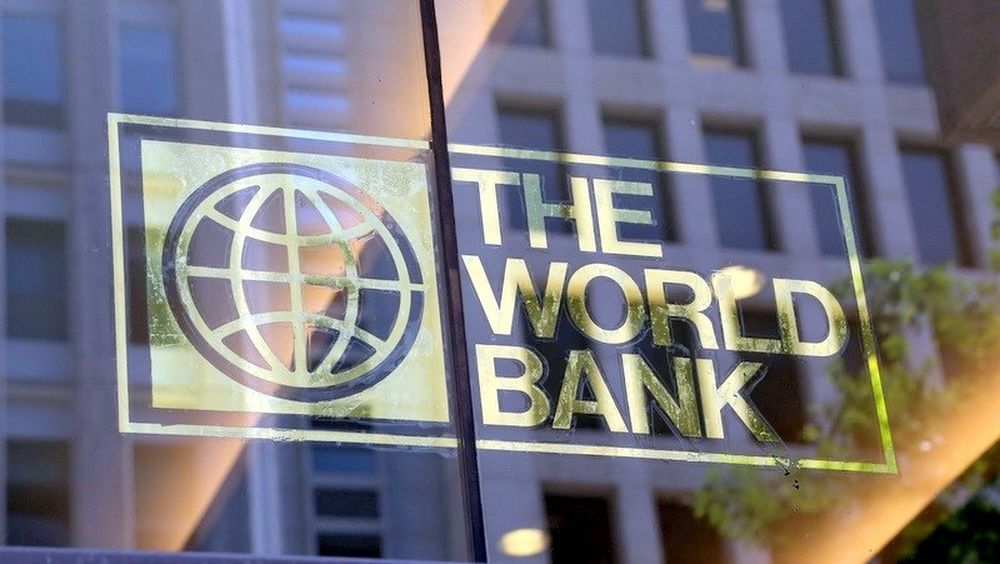The total liabilities of loss-making state-owned enterprises (SOEs) in Pakistan have ranged from 12 percent to 18 percent of GDP in recent years—a remarkably high percentage says the World Bank.
The Bank in its latest report “Hidden Debt Solutions to Avert the Next Financial Crisis in South Asia” stated that the SOE sector in Pakistan is more than twice as large as the international benchmark, controlling for the size of the economy.
Nonfinancial state-owned enterprises (SOEs) have a large footprint in South Asia. Total SOE revenues amount to nearly 8 percent of GDP in Sri Lanka, 12 percent in Pakistan, and 19 percent in India. These shares are significant by international standards. The total number of SOEs exceeds 200 in Pakistan, 400 in Sri Lanka, and 1,300 in India.
The SOE sectors of Pakistan and Sri Lanka generated net losses in two out of the three years between 2015 and 2017, and India’s state public sector enterprises (SPSEs), the SOEs owned by subnational governments, lost an amount equal to 0.5 percent of GDP in 2017. SOE loans amounting to 1 percent of GDP were under government guarantee in Pakistan in 2017. The implicit government commitment to cover SOE debt is even harder to quantify due to data limitations.
In the past five years, the total liabilities of loss-making SOEs in Pakistan have hovered around 12 percent of GDP. Pakistan has more than 200 such firms, and their revenue amounts to 12 percent of GDP.
Pakistan’s SOE sector generated a net profit in 2014 and 2015, but a net loss in the next two years. Pakistan’s SOE sector also shows a tendency toward rapidly declining profitability in recent years, with its net income dropping at an annual rate of 57 percent on average from 2014 to 2017.
On average during 2015–17, Pakistani SOEs received government loans and grants amounting to 0.9 percent and 0.8 percent of GDP, respectively, the report noted.
The total liabilities of SOEs in Sri Lanka exceeded 10 percent of GDP and were 20 percent of GDP for SOEs in Pakistan and CPSEs in India in 2017.
In Pakistan, the total liabilities of loss-making SOEs have ranged between 12 percent and 18 percent of GDP in recent years, a remarkably high percentage. If we include only chronic lossmakers—defined as SOEs that made a loss in three out of the five past years—this number remains between 8 percent and 12 percent of GDP.
In Pakistan, where provincial lending was much more restricted before the approval of the 2010 constitutional amendment, provincial debt is estimated to be 4 percent of GDP. This is toward the lower end of federal countries but higher than the average low- and lower-middle-income country (1.9 percent of GDP).
It further stated that Pakistan has a large share of Public-Private Partnership (PPPs) compared with the benchmark, while India has only marginally more. However, given India’s— and Bangladesh’s—large pipelines of infrastructure PPPs, the two countries can be expected to increase their shares significantly in the near future.
Some South Asian governments (India, Pakistan) use state-owned commercial banks, state-owned enterprises, and public-private partnerships more commonly than the global benchmark while others (Bangladesh, Sri Lanka) are catching up.
The report estimates the likely fiscal costs from PPP projects that are terminated early by simulating the effect of a profound macroeconomic crisis in 2020—combining a large depreciation of local currency with banking and debt crises. Such a profound macro-financial crisis would dramatically increase the fiscal costs from the early termination of PPPs, particularly in 2021.
The estimated fiscal costs over the 2020–21 period could reach 1.0 percent to 4.3 percent of government revenues. Specifically, they could be as high as 4.3 percent of government revenues in Pakistan, 3.9 percent in Bangladesh, and 3.7 percent in India.
Pakistan and Sri Lanka implemented 81 and 79 PPPs, respectively, followed by Bangladesh with 45 and Nepal with 38 during 1990–2018. In terms of value, PPP investments in India—amounting to $283 billion—account for more than 85 percent of the $328 billion in aggregate investment in PPPs in the region. India is followed by Pakistan and Bangladesh with total investments of $31 billion and $6.9 billion, respectively.
The total debt used to finance the currently active 1,056 greenfield and brownfield PPP projects in energy, transport, and water and sewerage in South Asia is estimated to be $218 billion, and the total equity financing is estimated to be $77 billion. The average leverage ratio, at the time of financial closure, among the active PPP projects in South Asia is 3.22. Debt financing makes up more than 70 percent of total physical investments in India, Nepal, and Pakistan.
India, Pakistan, and Bangladesh have the highest estimated fiscal costs from the early termination of active PPPs in the region. The estimated fiscal cost from early termination over the remainder of the contract periods of the PPPs ranges from $9.7 billion to $18.5 billion in India; $1 billion to $2 billion in Pakistan.
Pakistan faces the most significant fiscal challenge from the early termination of PPPs in South Asia—slightly less than 4 percent of the government’s annual revenues.
A profound macroeconomic crisis in 2020 would significantly increase the estimated fiscal costs from the early termination of PPPs, particularly in 2021. The estimated fiscal costs over the 2020–21 period could be as high as 4.3 percent of government revenues in Pakistan, 3.9 percent in Bangladesh, and 3.7 percent in India.
The experience with fiscal responsibility legislation at the central government level has been disappointing. Four countries (India, Maldives, Pakistan, Sri Lanka) have budget balance rules, but none of them have consistently adhered to the targets specified in the legislation. Pakistan’s public debt (comprising general government and SOE external debt) stood at 86.5 percent of GDP at the end of June 2019—more than 20 percentage points higher than the target specified in the Fiscal Responsibility and Debt Limitation Act (FRDLA) 2005.
“We estimate Pakistan’s subnational debt to be at about 4.0 percent of GDP or Rs. 1.56 trillion as of the end of June 2019”, it added. The relatively low level of subnational debt in Pakistan is in part due to the existence of a hard-budget constraint: prior to the passage of the 18th constitutional amendment of 2010, provinces were not authorized to raise new loans if they still held outstanding debt to the federal government.
In the event of a significant depreciation of the Pakistan rupee with respect to the US dollar, increases in outstanding debt stock and the costs of debt servicing could cause fiscal stress to provinces, which rely solely on foreign exchange management by the federal government to mitigate such risks.
A 25.5 percent currency depreciation in fiscal year 2019 illustrates this risk. It caused the outstanding debt stock for Punjab, Sindh, and Khyber Pakhtunkhwa to jump by 37.7 percent, 25.0 percent, and 20.5 percent, respectively, year-on-year by the end of June 2019.
Poor recording of debt, guarantees and contingent liabilities elevates the exposure to future fiscal shocks. There is no unified, centrally audited time series of provinces’ debt levels on an individual basis or on an aggregate basis. Instead, there are two different sources of provincial debt data. The first source consists of debt bulletins, which are published by all provinces except Balochistan. However, debt information varies in coverage and does not allow for long time series analysis.
Apart from public debt, there is also no regular reporting of risks that may arise from guarantees and contingent liabilities at the provincial level. Provinces do not systematically record the amount of guarantees and letters of comfort provided, yet experience shows that contingent liability shocks can exert long-term effects on provincial finances. Unfunded pension liabilities are also a significant source of implicit contingent liabilities for provinces.
Pakistan already has a legal limit on domestic borrowing; however, it does not consider that most of its provincial debt comes through external loans that are on-lent from the central government. This practice makes the limit irrelevant. Before Pakistan can start adopting recommendations concerning fiscal rules and other debt limitations, more comprehensive and timely data collection on provincial finances is needed.
Given Pakistan’s high debt ratio and general fiscal stress, more attention to monitoring and disclosing subnational fiscal risks is especially warranted. While provincial debt may be under control now, the lack of transparency elevates fiscal risks in the near and medium terms.
It further recommended that the federal government or the Controller General of Accounts could establish some standards about what is considered subnational public debt and mandate a format against which all provinces must report debt stocks. Costs of debt should also be made explicit along with information on redemption schedules.
To improve transparency, reporting should be made public on the websites of the province’s finance departments and as part of the Debt Policy Coordination Office’s (DPCO) publications. Eventually, standardized provincial debt databases should be institutionalized and aligned with the federal Debt Management and Financial Analysis System (DMFAS).
Pakistani provinces should also endeavor to identify and report on contingent liabilities by reporting on the number and total amount of guarantees explicitly issued to both private and public enterprises on a regular basis, the report added.
The post Pakistan Govt Entities Are Losing a Remarkably High Amount of Money: World Bank appeared first on .



